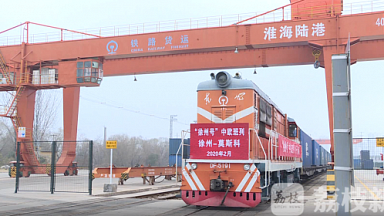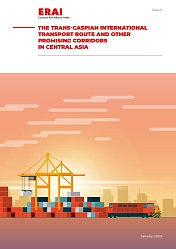COVID-19 outburst and subsequent surges of restrictions have drastically impacted functioning of the global economy and international trade. It is expected that by 2020 year-end, a decline in the global economy will constitute about 5 %, in the international trade — 8 % by value.
The pandemic has heavily impacted international transport. After a record drop in air traffic by 94 % in April 2020, freight air traffic, which inherently depends on passenger traffic, is only starting to recover.
Sea cargo shipment has faced disruptions in global added value chains, which exacerbated structural imbalances of the market and led to accumulation of containers in North America, as well as a spike in freight rates. In December 2020, WCI Drewry index reflecting the state of sea traffic between China and Europe has reached $ 4,011 per FEU, whereas ERAI index has remained steady after stabilizing at $ 2,671/FEU in December.
Stability of railway service and additional price-related advantages have urged consignors to move «from sea to rail», specifically in the Eurasian railway transit corridor. In April 2020, two-fold growth of traffic volumes has been captured for the first time in history in China-Europe-China route, amounting to 41.2 thousand TEU. As early as in July, the milestone of 50 thousand TEU per month has been exceeded, and in December the total traffic volume reached 500 thousand TEU.
As of 2020 year-end, traffic volume via the Eurasian route has amounted to 546.9 thousand TEU, which is an increment of 64 % versus 2019. Out of this amount, 198.8 thousand TEU (+45 %) have been dispatched to China and 348.1 thousand TEU (+77 %) — to the European Union.
The impressive traffic growth has resulted in geographic expansion of routes, whose number has exceeded 200 by now. Another last year’s record of the Eurasian corridor is the number of trains — 5,649. The growing demand required an increase in the railcar fleet up to 7,472 and reduction in the share of empty containers down to 7 % in both directions.
Despite the external constraints, the Eurasian transit has become one of the few railway segments with unprecedented dynamics in 2020 in contrast to universal stagnation. However, keeping this momentum in 2021 will require more effort, some of which has already been scheduled for implementation.
ABSTRACT
1. Global COVID-19 pandemic has led to an increase in two-way trade between the EU and PRC and raised China to the position of key trade partner of the European Union.
2. A collapse in the sea transportation market in contrast to reliability and stability of the railway channel has resulted in a surge of sea freight rates to exceed the railway PRC-EU rate by 50% in December 2020. All of it has objectively sped up the transition of consignors «from sea to rail», giving the railway transport an additional advantage in the 1,520 mm space.
3. In 2020, the share of railway container traffic in the China — Europe — China route vs. other modes of transport has grown up to 6–8% and, as some predict, will reach 10 % with this momentum.
4. Stability and reliability of railway transportation has enabled an increase in the traffic volume up to 547 thousand TEU, mean number of trains per day up to 15.54, and railcar fleet up to 7,472. In this context, both the rolling stock and the line infrastructure along the route have been able to handle the surging volumes despite little change in transit time and speed of trains.
5. Despite the fact that the main categories of transported goods still are electrical devices (85,135 TEU), mechanical equipment (80,556 TEU) and automotive equipment (57,796 TEU), which in total account for more than 40 % of overall transit volume, the assortment of the transported goods has grown up to 93, which suggests continuing diversification of goods.
6. In 2020, 93 % of all containers on the route were full, while the share of empty containers has reached a minimum of 7 %.
7. Presently the Eurasian railway transit corridor crosses Kazakhstan, Russia, and Belarus, and joins 21 countries and 100 cities. Stability of the main routes is complemented by dispatch and supply geography expansion.
8. In 2020, the Eurasian railway route crossing the territories of Kazakhstan, Russia and Belorussia has shipped 91.29 % containers through its border crossing points compared to railway border crossing points of Zabaykalsk, Naushki and several others in the Russian Far East. Only the Eurasian route has shown an increase in traffic volumes heading to China.
More details are available in the full version.





